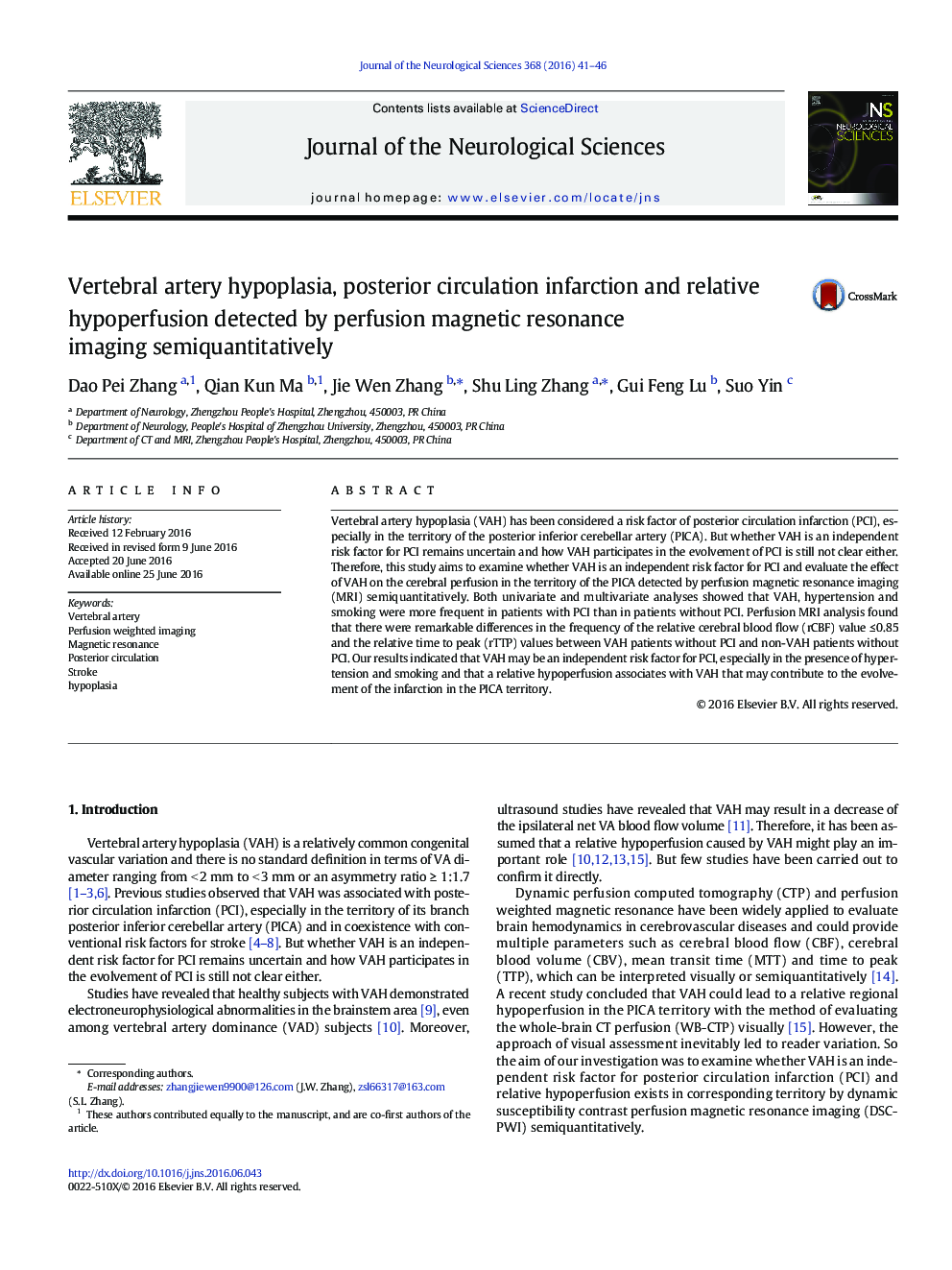| Article ID | Journal | Published Year | Pages | File Type |
|---|---|---|---|---|
| 1912953 | Journal of the Neurological Sciences | 2016 | 6 Pages |
•VAH, hypertension and smoking were more frequent in patients with PCI than in patients without PCI.•Cerebral perfusion in the territory of the PICA was determined and evaluated by PWI semiquantitatively.•VAH may lead to a hypoperfusion in the PICA territory that may contribute to the evolvement of cerebral infarction.
Vertebral artery hypoplasia (VAH) has been considered a risk factor of posterior circulation infarction (PCI), especially in the territory of the posterior inferior cerebellar artery (PICA). But whether VAH is an independent risk factor for PCI remains uncertain and how VAH participates in the evolvement of PCI is still not clear either. Therefore, this study aims to examine whether VAH is an independent risk factor for PCI and evaluate the effect of VAH on the cerebral perfusion in the territory of the PICA detected by perfusion magnetic resonance imaging (MRI) semiquantitatively. Both univariate and multivariate analyses showed that VAH, hypertension and smoking were more frequent in patients with PCI than in patients without PCI. Perfusion MRI analysis found that there were remarkable differences in the frequency of the relative cerebral blood flow (rCBF) value ≤ 0.85 and the relative time to peak (rTTP) values between VAH patients without PCI and non-VAH patients without PCI. Our results indicated that VAH may be an independent risk factor for PCI, especially in the presence of hypertension and smoking and that a relative hypoperfusion associates with VAH that may contribute to the evolvement of the infarction in the PICA territory.
